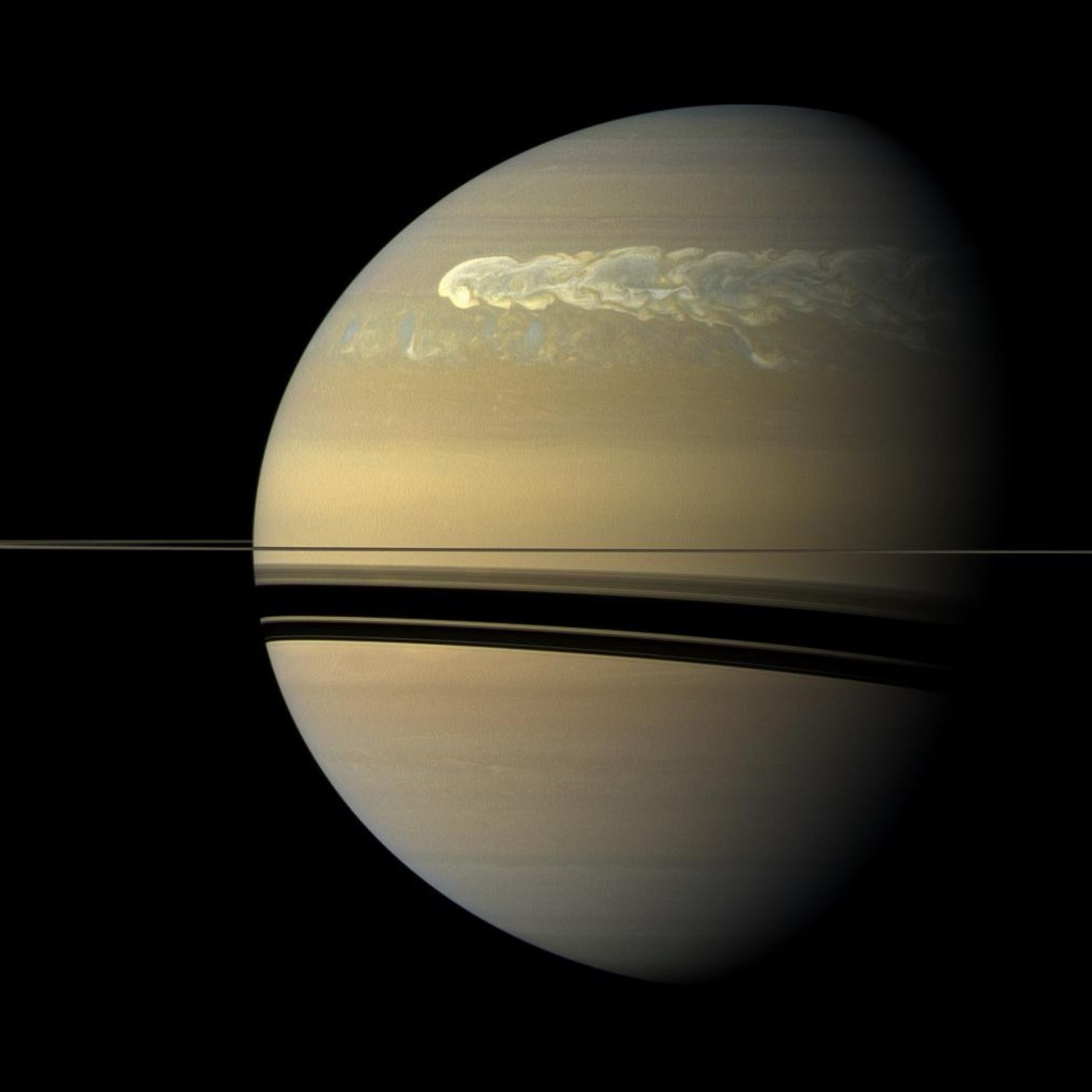Saturn's Hidden Megastorms: Unveiling Long-Lasting Atmospheric Anomalies
A recent study published in Science Advances uses radio astronomy to examine how megastorms on the planet Saturn can affect the planet’s atmosphere long after the storms have dissipated, with these effects potentially lasting for several hundred years and potentially disrupting ammonia gas distribution deep inside the gas giant. Contrary to hurricanes on Earth, scientists continue to be puzzled regarding what causes the megastorms on Saturn, which can last 20-30 years. This study was conducted by an international team of researchers and holds the potential to help scientists better understand the long-term effects of planetary storms, specifically Jupiter’s Great Red Spot, which is the largest storm in the entire solar system.
A megastorm on Saturn imaged NASA’s Cassini spacecraft on Feb. 25, 2011, approximately 12 weeks after the powerful storm was first identified in Saturn’s northern hemisphere. The megastorm is observed partially engulfing itself as it encompasses the entire planet. Researchers have discovered alleged after-effects of megastorms deep within Saturn’s atmosphere that occurred hundreds of years ago. The dark stripes in the image are the shadows of Saturn's rings. (Credit: NASA/JPL/Space Science Institute)
"Understanding the mechanisms of the largest storms in the solar system puts the theory of hurricanes into a broader cosmic context, challenging our current knowledge and pushing the boundaries of terrestrial meteorology," said Dr. Cheng Li, who is an assistant professor at the University of Michigan, a former 51 Peg b Fellow at UC Berkeley, and lead author of the study.
For the study, the researchers used the Very Large Array run by the National Radio Astronomy Observatory (NRAO) to conduct radio observations of Saturn’s giant atmosphere. They observed anomalies in ammonia gas distribution at various depths throughout Saturn’s atmosphere and attributed these anomalies to past megastorms transporting ammonia gas from the upper to lower atmosphere, which they hypothesize could last up to several centuries.
"Radio observations help characterize dynamical, physical and chemical processes including heat transport, cloud formation and convection in the atmospheres of giant planets on both global and local scales,” said Dr. Imke de Pater, who is a professor emeritus in the Department of Astronomy at UC Berkeley, and a co-author on the study.
This study draws comparisons to Jupiter’s Great Red Spot, which is the largest storm in the solar system, and the effects that storm might have on atmospheric dynamics within that gas giant, which is much larger than Saturn. The glaring difference between Saturn and Jupiter is that while the former’s atmosphere is almost entirely uniform in nature, the atmosphere of Jupiter is divided into various light and dark bands. The takeaway from examining both planets is that scientists could gain a better understanding of atmospheric dynamics on not just planets within our solar system, but exoplanets, as well.
What new discoveries will scientists make about megastorms on gas giants in the coming years and decades? Only time will tell, and this is why we science!
As always, keep doing science & keep looking up!
Sources: Science Advances, ScienceDaily, NASA, Berkeley News, National Radio Astronomy Observatory









